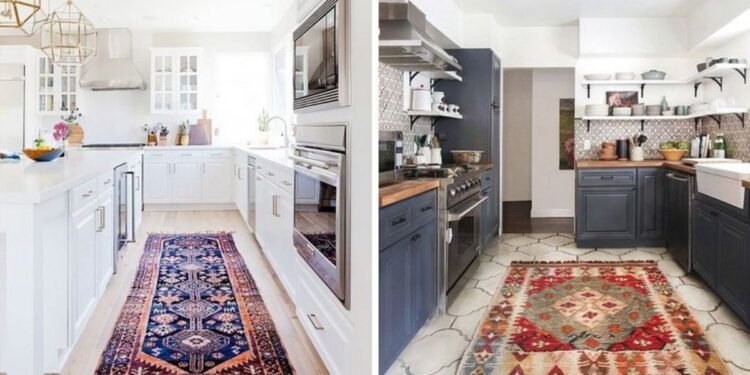The kitchen stands as the heart of every home, serving as a hub where families unite to cook, share meals, and create lasting memories. Yet, with frequent use, this space may eventually exhibit signs of wear and tear, prompting the desire for a remodel. While an exciting prospect, the task of remodeling a kitchen can be overwhelming due to the myriad decisions involved, spanning from layout and materials to color schemes and lighting. This guide aims to navigate you through the remodeling journey, encompassing planning, budgeting, design, execution, and essential tips to help craft the kitchen of your dreams.
1. Assessing Your Needs and Goals
Before embarking on a kitchen remodeling endeavor, it’s pivotal to assess your needs and establish clear goals. Since the kitchen serves as the home’s nucleus, its functionality should align with your lifestyle and preferences. Evaluating the current kitchen layout’s strengths and areas for improvement is vital. Does the space lack adequate storage or sufficient counter space for meal prep? Are you contemplating a more open layout for entertaining guests? Assessing long-term goals, whether to enhance personal living or elevate property value for future sales, is equally crucial.
Gathering inspiration is integral; peruse home improvement magazines, visit showrooms, and scour online platforms to compile a vision board. This collection of images will serve as a reference to align your remodeling decisions with your envisioned outcome.
2. Setting a Budget
A well-defined budget is the cornerstone of any successful kitchen remodel. It not only keeps you organized but also prevents overspending and subsequent financial strain. Assess your savings and potential additional funds for the project. Consulting a financial advisor can offer clarity on your financial capabilities. Account for unforeseen expenses such as structural issues or hidden plumbing/electrical work.
Prioritize aspects of the remodel according to your budget, whether investing in appliances, cabinetry, or flooring. Research and gather quotes from multiple contractors and professionals to ensure alignment with your financial plan.
3. Finding Inspiration and Crafting a Vision
Discovering inspiration and crafting a vision constitutes the bedrock of a successful remodel. Peruse various sources—home design magazines, showrooms, and online platforms—to pinpoint styles, colors, materials, and layouts that resonate with your preferences. Tailor a vision board to consolidate ideas and design inspirations, merging aesthetics and functionality that align with your unique lifestyle.
Collaborating with professionals such as architects and designers is pivotal at this stage. Sharing your vision board and discussing goals, budgets, and timelines with them ensures a cohesive plan to realize your dream kitchen.
4. Hiring a Professional or DIY Approach
Choosing between hiring a professional and undertaking a DIY project hinges on skill level, budget, and time commitment. Professionals offer expertise, network access, and guidance through complex tasks, ensuring a smooth remodeling journey. Alternatively, DIY projects allow for complete control over decisions and offer opportunities for skill acquisition, albeit requiring more time and resources.
5. Crafting a Remodeling Plan and Timeline
Detailed planning and a comprehensive timeline are pivotal for a successful kitchen remodel. Assess the current kitchen and determine desired changes, creating a meticulous timeline for each phase of the remodel. Ensure buffer time for unforeseen circumstances and sequence tasks logically to streamline the process. Effective communication of this timeline with contractors and suppliers minimizes potential conflicts and delays.
6. Selecting the Right Materials and Finishes
The choice of materials and finishes significantly influences the kitchen’s aesthetic and durability, including countertop options like quartzite countertops in Simpsonville and granite. Prioritize quality and durability while considering the desired style—modern, rustic, or classic. Mindful consideration of maintenance requirements helps select materials that endure high-traffic areas, yet require minimal upkeep. Focus on finishes and hardware that complement the chosen materials, providing a harmonious and polished look.
7. Choosing Appliances and Fixtures
Appliances and fixtures serve as essential elements defining the kitchen’s functionality and aesthetics. Reflect on individual needs, kitchen layout, and preferred design to select appliances and fixtures. Balance between style, quality, and energy efficiency, ensuring seamless integration into the overall design.
8. Maximizing Storage and Organization
Efficient storage solutions optimize kitchen functionality. Custom cabinets, organizers, and built-in storage units efficiently utilize space, maintaining a clutter-free and organized kitchen. Utilizing underutilized areas like above-cabinet space maximizes storage capacity.
9. Incorporating Functional and Stylish Design Elements
Focusing on the kitchen’s layout and storage aligns functionality with style. Implementing work triangle concepts and blending aesthetic elements into functional design fosters an efficient and visually appealing space. Emphasize quality materials and finishes to elevate the overall kitchen aesthetic.
10. Hiring Contractors and Managing the Process
Engaging experienced contractors and maintaining active oversight streamlines the remodeling process. Extensive research, clear communication, and well-documented contracts set expectations, fostering a collaborative relationship. Flexibility in accommodating unexpected challenges ensures the project stays on course.

11. Managing Unexpected Challenges and Changes
Expecting unforeseen challenges and changes is pivotal during remodeling. A contingency plan in the budget addresses unexpected expenses. Effective communication and adaptability when encountering alterations help navigate through unexpected hurdles without derailing the project.
12. Adding Personal Touches and Finalizing the Project
Incorporating personal touches, finalizing details, and admiring the transformed space marks the culmination of the remodeling journey. Attention to smaller details, organization, and functional additions add warmth and personalization to the kitchen.
13. Maintaining and Enjoying Your Remodeled Kitchen
Sustaining a clean and organized space, optimizing workflow, experimenting with new recipes, creating a welcoming ambiance, and relishing the space are key factors in enjoying the benefits of a remodeled kitchen.
Conclusion:
Crafting a successful kitchen remodel involves meticulous planning, diligent execution, and adapting to unforeseen circumstances. By following these steps and guidelines, whether choosing bathroom countertops in Simpsonville or elsewhere, you’ll embark on a transformative journey, turning your kitchen into a space that harmonizes functionality, style, and personal expression.










